Lesson 3
| Site: | MoodleHUB.ca 🍁 |
| Course: | Math 30-3 SS |
| Book: | Lesson 3 |
| Printed by: | Guest user |
| Date: | Monday, 3 November 2025, 4:51 AM |
Description
Created by IMSreader
1. Lesson 3
Module 5: Geometry
Lesson 3: Regular Polygons
Focus
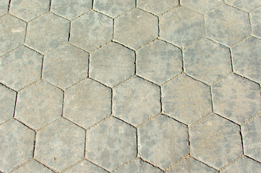
© kenny/436682/Fotolia
Stone pavers are one way to build a walkway or patio near a home. Have you ever laid a walkway or patio using stone pavers? The photograph is an example of a walkway built with stone pavers that are in the shape of regular polygons. What is the name of the polygon used? What do you notice about the sides and angles of each polygon? Can the type of polygon shown be divided into other shapes?
In this lesson, you will explore different regular polygons and determine some of the properties of regular polygons. You will then use these properties to help solve problems that involve regular polygons.
Lesson Outcomes
At the end of this lesson you will be able to
- solve problems that involve regular polygons
Lesson Question
You will investigate the following question:
- How can the properties of regular polygons be used to help solve problems?
Assessment
Your assessment may be based on a combination of the following tasks:
- completion of the Lesson 3 Assignment (Download the Lesson 3 Assignment and save it in your course folder now.)
- course folder submissions from Try This and Share activities
- additions to Glossary Terms and Formula Sheet
- work under Project Connection
Materials and Equipment
- paper
- cardboard or foam core board
- ruler
- scissors
- glue stick
- calculator
1.1. Launch
Module 5: Geometry
Launch
Do you have the background knowledge and skills you need to complete this lesson successfully? Launch will help you find out.
Before beginning this lesson you should be able to recognize lines of symmetry.
1.2. Are You Ready?
Module 5: Geometry
Are You Ready?
Complete these questions. If you experience difficulty and need help, visit Refresher or contact your teacher.
Determine the number of lines of symmetry for the objects shown.
If you answered the Are You Ready? questions without difficulty, move to Discover.
If you found the Are You Ready? questions difficult, complete Refresher.
1.3. Refresher
Module 5: Geometry
Refresher
Work through Line of Symnetry.
Go back to the Are You Ready? section and try the questions again. If you are still having difficulty, contact your teacher.
1.4. Discover
Module 5: Geometry
Discover
A polygon is a closed figure made up of three or more straight line segments. What do you think a regular polygon is? In Try This 1, you will explore the idea of regular polygons.
Try This 1
Use Regular Polygons to complete the questions shown here.
- Complete a table like the one shown.
Number of Sides Name Are all sides of equal length? Are all interior angles equal? Are any lines parallel? How many lines of symmetry are there? 5 6 7 8 9 10 11 12 - All shapes used in the applet were regular polygons. In previous lessons you studied equilateral triangles and squares, which are both regular polygons. What do you think is the definition of a regular polygon?
- When do regular polygons have parallel sides? When do regular polygons not have parallel sides?
- What do you notice about the shape of a polygon as the number of sides increases?
![]() Save your responses in your course folder.
Save your responses in your course folder.
1.5. Explore
Module 5: Geometry
Explore
In Try This 1, you may have noticed the following properties of regular polygons.
- All sides are equal.
- All interior angles are equal.
- If there is an even number of sides, then the opposite sides are parallel.
- If there is an odd number of sides, then there are no parallel sides.
- The number of lines of symmetry is equal to the number of sides.
Self-Check 1
![]()
- Answer “Build Your Skills” question 1 on page 207 of the textbook. Answer
So far you have looked at some of the properties of regular polygons. In the next Try This, you will take a closer look at the measure of the interior angles of regular polygons and how these angles can be determined.
Try This 2
Open Regular Polygons and use the Size slider to change the size of each regular polygon.
- If the lengths of the sides of a regular polygon change, do the interior angles change? Explain.
Use the following information and the image to answer the remaining questions.
Each interior angle of a regular pentagon is 108°. You will discover how this measurement can be calculated using triangle properties.
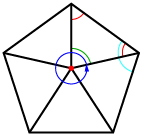
- From the centre of the pentagon, draw line segments to each vertex, similar to the diagram shown. How many triangles are formed? Are the triangles identical? Why or why not?
- At the centre of the pentagon, the triangles meet. What is the angle indicated in dark blue at the centre of the pentagon?

- Using your answers from questions 2 and 3, what is the measure of the angle of each triangle where it touches the centre of the pentagon (indicated in green)?
- What type of triangles are formed inside the regular pentagon?
- Using your answers from questions 4 and 5, what are the measures of the angles inside the triangle, indicated in red at the outer edges of the triangle?
- What is the measure of each interior angle of the pentagon (indicated in light blue)?
- What is the sum of the interior angles of the pentagon?
![]() Save your responses in your course folder.
Save your responses in your course folder.
1.6. Explore 2
Module 5: Geometry
In Try This 2, you may have found that the triangles created inside a regular pentagon are identical and are isosceles triangles. Using your knowledge of isosceles triangles, you would have determined the measure of each interior angle of the regular pentagon. To see how the interior angle of a regular polygon can be determined, view Interior Angles of a Regular Polygon. Select the Play button for each step to continue.
As you saw in Interior Angles of a Regular Polygon, the measure of each interior angle and the sum of the interior angles of a regular polygon can be determined using the formulas given here.
For an n-sided regular polygon, the following are true:
![]()
In the next Try This, you will use these formulas to determine the measure of each interior angle and the sum of the interior angles for regular polygons.
Try This 3
- Complete a table like the one shown.
Regular Polygon Name Number of Sides, n Measure of Each Interior Angle 
Sum of Interior Angles

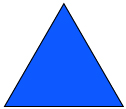
equilateral triangle 3 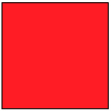
square 4 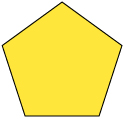
pentagon 5 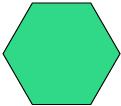
hexagon 6 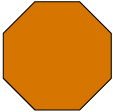
octagon 8 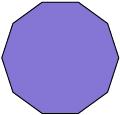
decagon 10 - What happens to the measure of each interior angle as the number of sides increases?
- Create a graph with the data from your table. Graph the number of sides, n, on the x-axis and the sum of interior angles, S, on the y-axis.
- What happens to the sum of the angles as the number of sides increases?
![]() Save your responses in your course folder.
Save your responses in your course folder.
1.7. Explore 3
Module 5: Geometry
In Try This 3, you may have found that the measure of each interior angle increases as the number of sides of the polygon increases. The sum of the interior angles of a polygon increases by 180° each time a side is added to the polygon. As the number of sides of a polygon increases, the sum of the interior angles increases.
Self-Check 2
Answer “Build Your Skills” questions 3 and 4 from page 208 of the textbook. Answer

iStockphoto/Thinkstock
Throughout the lesson, you have looked at properties of regular polygons. In the next Try This, you will try to construct a set of regular polygons and explore how this concept applies to the construction of materials.
A hexagon is a regular polygon that is often used in construction, as can be seen in the chicken wire shown. Hexagons can also be seen in honeycomb structures.
Try This 4
Read “Activity 5.3 Honeycomb Structures” on pages 205 and 206 of the textbook.
Complete “Part A: Assembly and Testing” questions 1 to 5 starting on page 205 of the textbook. Then answer questions 1 and 2 from “Part B: Assessing Honeycomb Structures” on page 206 of the textbook.
![]() Save your responses in your course folder.
Save your responses in your course folder.
1.8. Explore 4
Module 5: Geometry
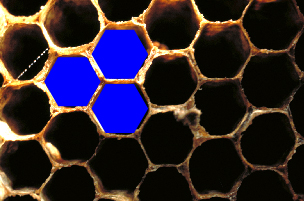
Jupiterimages/Photos.com/Thinkstock
In Try This 4, you may have found that the shape of each cell of your structure is a hexagon. A hexagonal shape works well in a honeycomb structure, because each interior angle of a regular hexagon is 120°. Exactly 3 hexagons will fit together without a gap, because 120° divides evenly into 360° three times.
Squares are another regular polygon that would work in a honeycomb structure. Because 90° divides evenly into 360° four times, 4 squares would fit together without a gap. Honeycomb structures are useful because they provide strength but use less material, which makes them lighter. A honeycomb structure may be used in the core of a running shoe or a snowboard.
Self-Check 3
Add the following terms to your copy of Glossary Terms:
- polygon
- regular polygon
Add the following formulas to your copy of Formula Sheet:
- interior angle: for

- sum of interior angles: for n-sided regular polygon = 180°(n − 2)
1.9. Connect
Module 5: Geometry
Complete the Lesson 3 Assignment that you saved in your course folder at the beginning of the lesson. Show work to support your answers.
![]() Save your responses in your course folder.
Save your responses in your course folder.
Project Connection
You are now ready to apply your understanding of polygons to Module 5 Project: Designing a Yard. Go to the Module 5 Project, and complete Part 1: Inspiration for a Yard.
Going Beyond
Read “Roots of Math—Radial Symmetry in the Natural World” on page 201 of the textbook. Complete questions 1 and 2.
![]() Save your responses in your course folder.
Save your responses in your course folder.
1.10. Lesson 3 Summary
Module 5: Geometry
Lesson 3 Summary

© margo555/35109581/Fotolia
In this lesson, you examined the properties of regular polygons. Regular polygons are useful in building and construction because of their unique properties. Different regular polygons fit together to form uniform or strong structures.
Regular polygons have the following properties:
- All sides are equal.
- All interior angles are equal.
- If there is an even number of sides, then the opposite sides are parallel.
- If there is an odd number of sides, then there are no parallel sides.
- The number of lines of symmetry is equal to the number of sides.
You also explored how the interior angles of a regular polygon can be determined and found:
- interior angle for

- sum of interior angles for n-sided regular polygon = 180°(n − 2)
In the next lesson, you will look at how different shapes can be changed to create new shapes.






